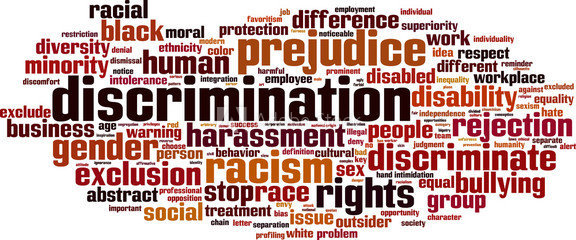Racial Stereotypes (Romania)
Begin with a discussion on the concepts of race and ethnicity. Write each word on the board or on a flip chart and ask students to list the attributes that define the terms "race" and "ethnicity." Record their ideas. Next, ask students for the names of five different racial or ethnic groups.
Prepare five large sheets of paper (flip chart paper). At the top of each sheet, write the name of one of the groups that the students named.
Divide the class into five groups and supply each student in the class with a marker.
Give each group one of the five sheets of paper. Ask them to list as many stereotypes that are commonly used to describe the category of people written at the top of paper. Give students three minutes to complete the exercise. Emphasize that students should list stereotypes that they have heard, not ones that they necessarily believe to be true.
When they are finished, rotate the sheets of paper between groups so that each group works on a new sheet. Have them add any unlisted stereotype adjectives. Rotate every three minutes until every group has worked on every sheet.
Post the sheets in class where everyone can see them and give students five minutes to read the sheets.
Conclude the lesson with a discussion on the exercise, asking students the following:
> How do the stereotypes recorded by the class make you feel?
> What do you notice about the stereotypes listed? Be aware that the students may have listed good and bad adjectives, many stereotypes for different groups, or the same stereotypes for different groups.
> Where have you seen these stereotypes portrayed? Television programs, movies, magazines, books?
> How do you think a stereotype might cause someone to act unfairly toward another person?
This lesson is designed to affect attitudes and receptiveness to new ideas. It is important that the basic principles of this lesson—freedom from bias and stereotypes and recognizing individuals—are interwoven into the classroom environment throughout the year. Changing attitudes around bias requires continual reinforcement.

Discrimination
This is an activity about discrimination and the aims of the activity are to understand that some groups of people can be treated unfairly because of their characteristics, to understand what is meant by discrimination and to be able to identify negative and discriminatory behaviour. During this activity, you need to provide some preferential treatment to a particular group of students. Suggest saying that all students with brown eyes must stand at the back, and all others can be seated. Explain that it is a new Government seating strategy and aim to provoke a reaction. How does it feel to be treated in this way? Was this fair treatment? Students are praised and seated. Using slides, present the number of people killed in different genocides. Discuss what they show and explain that they are examples of how extremely prejudicial views can lead to appalling acts of discrimination.
Different situations of discrimination
This activity involves students’ drawing and acting skills and aims to illustrate different situation of discrimination.
Group the students in 4 teams (each team had 4 or 5 members) and they have to draw a situation when someone was discriminated and then to make a short presentation of that case. For example, a team draws a man in wheelchair. He couldn’t enter a building because there wasn’t any special entrance for disabled people. Then they act the situation in front of the class. Another team could talk about the women that must hide their hair (because of their religion). These women are usually seen as ugly or unattractive and, on the other hand, the women who don’t cover their hair are seen as beautiful.
After the presentations students discuss their feelings towards the presented cases and understand that even though everyone is different, all the people have feelings, wishes and dreams.